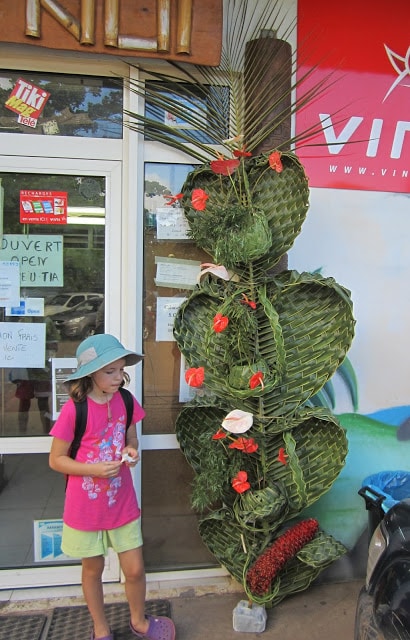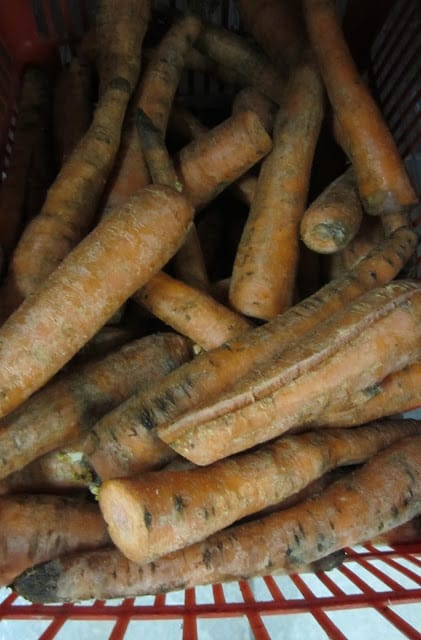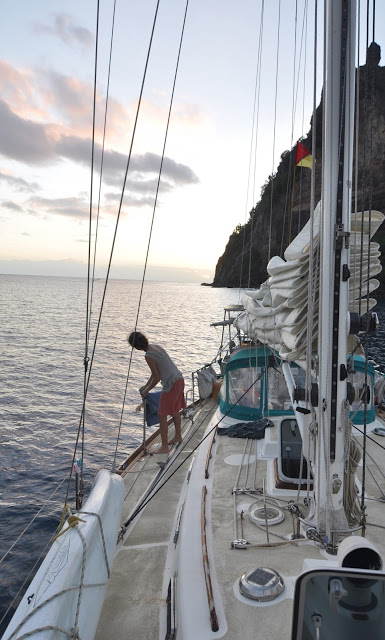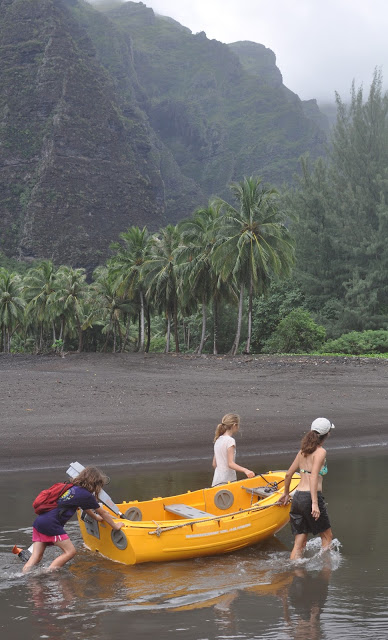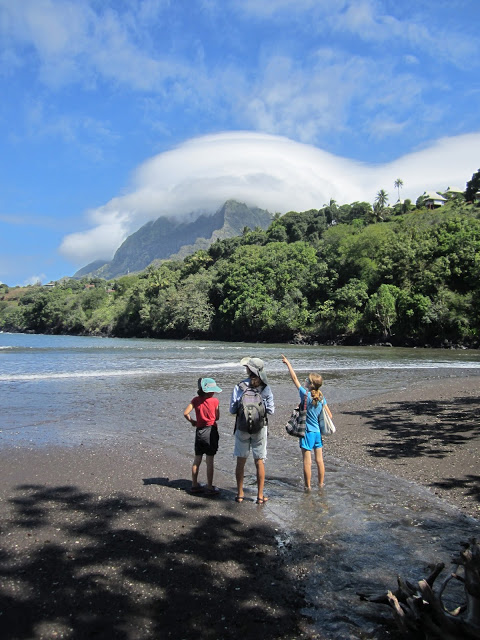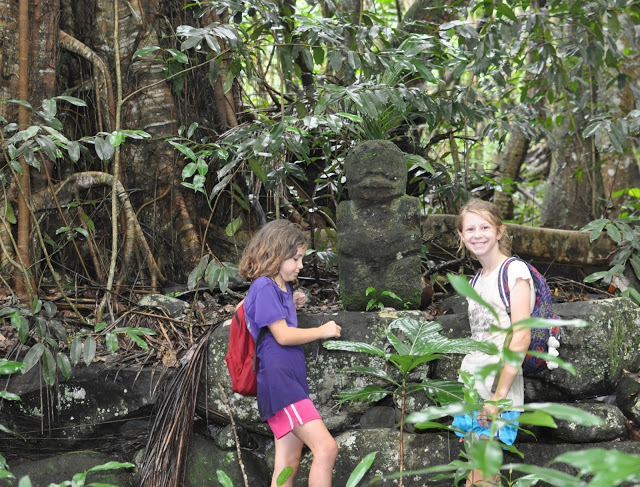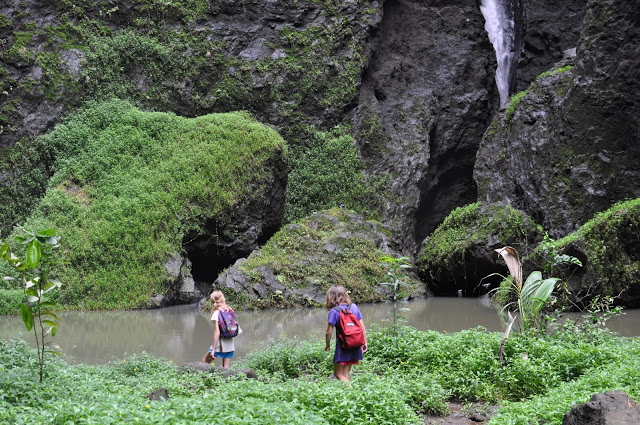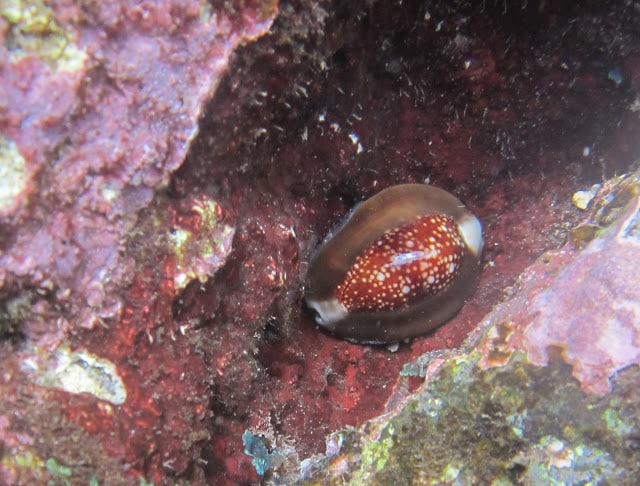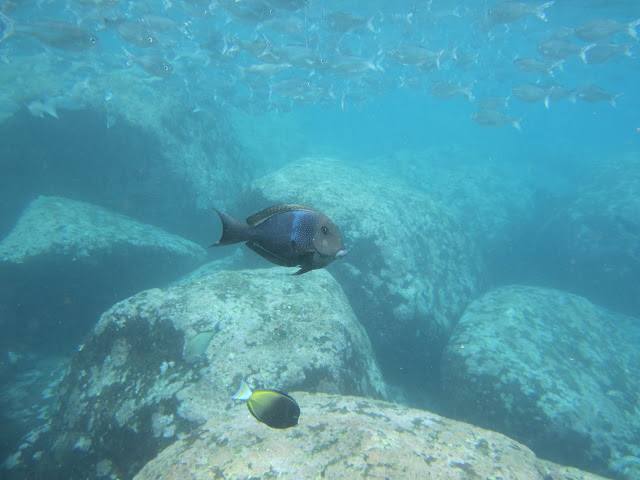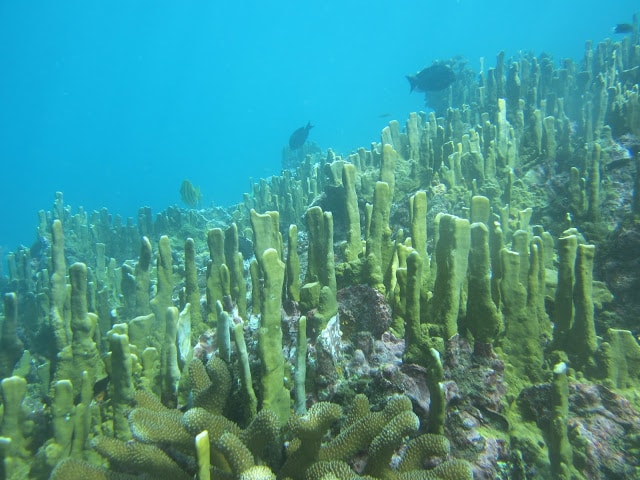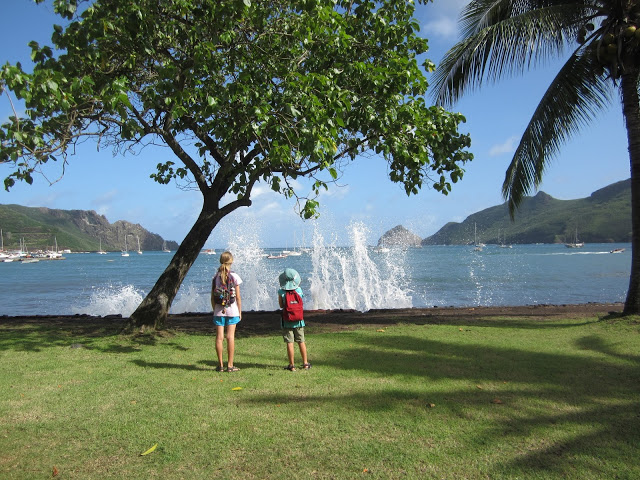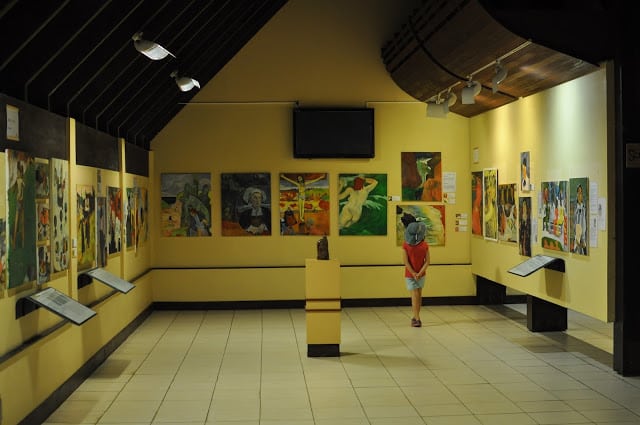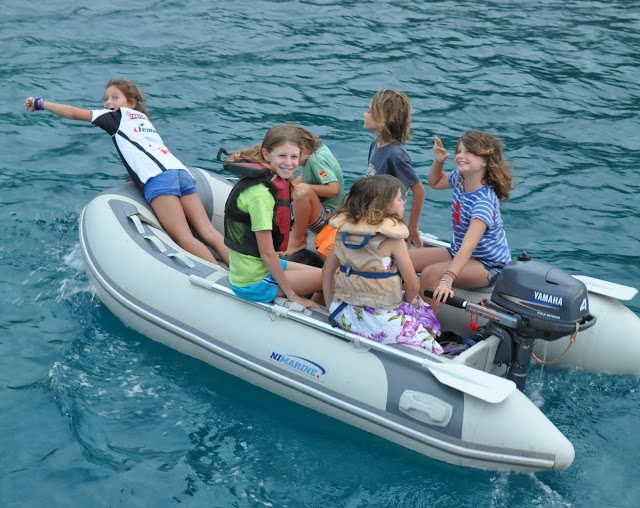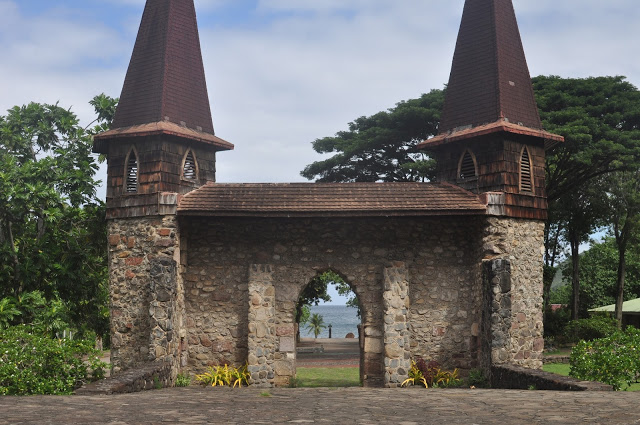We spent over six-weeks in the Marquesas. We explored the islands of Fatu Hiva, Hiva Oa, Tahuata, Nuku Hiva, and Ou Pou, all within a half-day to overnight sail of one another. Now we’re gone, a four-night sail south-southwestward took us to the Tuamotus, a very different place.
While the Marquesas and Marquesans are still fresh in my mind, I want to cover some of what we learned and encountered while there.
People
If we’d left the Marquesas after our first several days in Fatu Hiva, I’d have a very different perspective than I have now. There are fewer than 10,000 Marquesans living in several small communities on a few islands. And yet, I feel we had to visit as many as we did and spend the time we did to get a sense of these people—and all I am left with is my sense, I don’t pretend to believe I have everything figured out.
We met the occasional odd ducks, mostly on Fatu Hiva, but also on Tahuata, both times in comparatively isolated communities. We never felt threatened, but we did feel uncomfortable, in the sense that we knew somebody wanted something from us or to communicate something to us, but we were never able to connect—despite good intentions. But…
We also came to know Marquesans as among the kindest, proudest people we’ve encountered traveling. Walking through Marquesan communities, we almost always had the sense that people were ready to give us the shirts off their backs. I’m wired to be skeptical. Presented with generosity after generosity, I wondered repeatedly what the catch was, only to feel shame again and again when I learned there was none.
There is trouble in paradise too. We were cautioned a few times by older Marquesans not to leave shoes or hats or anything else of value in our dinghy, because the younger people would steal them. We heard that teen pregnancy is nearly the norm. We read about more serious problems like incest.
Yet, we almost always got a warm, kind, helpful vibe from people we met. People went out of their way to give us rides in their car. Vendors nearly always slipped us extras as we shopped. People came out of their homes to give us food from their trees as we walked past.
The Marquesans seem idle, people who have free time because they live among abundance. The trees are heavy with more food than the population can consume. The Marquesans don’t seem to take the beauty and richness of their landscape for granted. I don’t know how this can be. I suspect if I grew up here and this was all I knew, the smell of the flowers in the air and the lush greenery would become invisible. I suspect I would come to resent this blue ocean that borders my world and isolates me. Surely I’d grow tired of coconut and pamplemousse. Yet, over and over people expressed to us genuine enthusiasm and appreciation and pride about their home.
A lot of Marquesans smoke. Women often wear tropical flowers behind an ear in their regular lives. Many of the men are fit and many women are obese. Some men, called mahu, are raised as girls, and continue on to live their lives as women.
Food
Marquesan food includes a lot of pigs, goats, and the local produce (pamplemousse, bananas, string beans, oranges, limes, breadfruit, coconut, and a few others I don’t know the names for). It also includes a lot of baguettes and Chinese stuff. Egg rolls are popular—pre-made and sold at every grocery counter, cold. Sometimes there is meat inside, sometimes not. A popular sandwich is a section of a baguette sliced open and filled with chow mien noodles. The store shelves include a lot of Chinese products and condiments. There are also a lot of French products, such as frozen and canned snails, duck and other pates, and soft cheeses galore. There is canned butter from New Zealand and boxed UHT milk from France and Germany. The local Hinano beer is from Tahiti, there is wine from Europe. The only breakfast cereal available are a few off-label equivalents of things like Cocoa Puffs and Fruit Loops.
Almost everything is very, very expensive. Those boxes of crappy cereal are 600-700 French Pacific francs (XPF, and the XPF to dollar exchange rate is roughly 100:1). The wine is 1500-2800 XPF per bottle. Windy (read: not me) paid 900 XPF for a head of purple cabbage. But, if you brought a literal boat load of food with you from Mexico, and you like the local produce, and you don’t eat out, the cost of eating in the Marquesas isn’t high. Also, in every store, all the items with red price tags are subsidized. We were able to buy baguettes for 64 XPF. Liters of milk are 114-126 XPF. Canned butter and pasta and some canned vegetables are also subsidized.
There have been very few restaurants to tempt us. The only time we went out to eat was at a formal pig roast in a private home with about 30 other cruisers.
Fun
Off the boat, we’ve spent our time snorkeling (when we’ve been in anchorages away from the big communities on Hiva Oa and Nuku Hiva). The water clarity isn’t like the Tuamotus, but it’s been okay. We go on walks and hikes. We talk to people. We stumble on singing and dancing rehearsals sometimes. We went to the Gaugain museum on Hiva Oa.
Many people we’ve met have rented cars and toured the islands, or gone on private, all-day organized tours. We’ve heard great things from both groups, but we’ve not been able to justify the expense. It costs about US$120 a day to rent a car and the tours are US$40-50 per person.
Anchoring
We dropped the hook in 140 feet of water to anchor at the back of a pack of 20 boats in Fatu Hiva. It’s not since been that deep. But, most of the anchorages are a bit rolly and in Hiva Oa, we had no choice but to use a stern anchor as the anchorage is small and crowded. There were a few boats just outside the anchorage swinging on a single hook, but it looked pretty rolly out there. In Nuku Hiva, many folks used stern anchors to keep their boats pitching instead of rolling, but we did not—it wasn’t so bad.
In general, the anchorages were rolly and not well protected–but also not as bad as we expected, given what we’d heard. Then again, writing as I am from the flat calm of a Tuamotu atoll anchorage, I don’t miss the rolling.
Internet
We enjoyed the best internet in all of the Marquesas at our first, most remote, anchorage, off Fatu Hiva. There is a wifi tower there and we were able to access it from the boat using our wifi antenna, paying with a credit card online. After that, we never had it as good. Nuku Hiva and Hiva Oa both had wifi signals we could reach, but the connection was usually frustratingly slow. The two big vendors seem to be Manaspot and Hotspot. I bought a 100 hours on the former for about US$110. It was all about time connected, not bandwidth—the opposite of what we were used to in Mexico.
Money
Before we left Mexico, we stocked up on U.S. dollars, euros, and stuff to trade. We have yet to use (or be able to use) any of the dollars and we used only a few euros on a specific occasion. We are very glad we brought the things we did to trade, especially used rope and shoes and colored markers.
In the Marquesas, the French Pacific franc (XPF) is the accepted currency. In the larger communities on Hiva Oa and Nuku Hiva, we found ATMs from which it was easy to get cash. We didn’t see ATMs on any of the other islands. Also on Hiva Oa and Nuku Hiva, we were able to use a credit card in most of the grocery stores—so long as our purchase was over XPF$2000 or so (again, XPF to dollar is roughly 100:1, so that’s roughly $20). On both islands, I also used a credit card to buy diesel. I suspect we could have used credit cards at one of the few restaurants we saw, but we never ate out. Most of our transactions were in cash.
We met a kind farmer (Steven—he’s a bit intense, but cool) on Tahuata, and after he gifted us some coconuts and gave us a tour of his home and plantings, we were happy we had a shovel to give him (we’d hauled this shovel around for some unknown reason for years). Likewise, we were constantly glad we carried things in a backpack around with us as it was always nice to offer things in return for all the random kindness we were shown. We also used those things to trade for fruit—lots and lots of fruit.
Water
We were in the Marquesas for the rainiest part of the year. It rained several times per day at times. The good thing about this is the boat hasn’t been as clean in a long time and we were able to keep our tanks filled with rain water. The bad thing about the intermittent rain was shutting and opening the hatches several times per night. It was like waking to tend a crying newborn. But since I’m unemployed, I could just sleep in to make up for it.
Otherwise, water in most Marquesan ports was potable and readily available. The only exception was Nuku Hiva, where the water is contaminated from ag runoff–though a couple free taps are available in town, they are not really walking distance and the water, though potable, is murky. (We also didn’t swim in the bay off Taiohae in Nuku Hiva as the water is said to be contaminated and we know first-hand that it’s filled with sharks used to aggressively attacking anything that falls in the water—habituated as they are by the regular fish cleaning we saw).
In our twenties, we traded our boat for a house and our freedom for careers. In our thirties, we lived the American dream. In our forties, we woke and traded our house for a boat and our careers for freedom. And here we are. Follow along with the Roberston’s onboard Del Viento on their blog at www.logofdelviento.blogspot.com.
